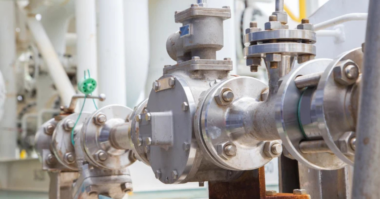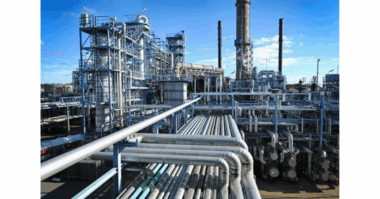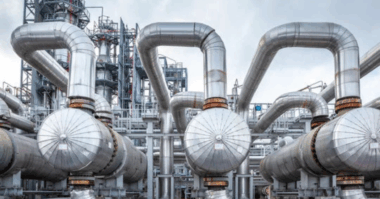Incorporate confident calculations and proactive analysis in the piping systems design
Today’s water industry is benefiting from sophisticated pipe flow analysis software solutions.
Fluid dynamic simulation software for engineers can be used to calculate pressure drop and pipe flow distribution in liquid, gas, and slurry piping systems. This type of software offers many advantages for water and wastewater treatment applications, including:
- Accurately simulating individual water pipeline/treatment plant components and interaction
- Tightly integrating equipment characteristics, analysis and output with your system’s schematic representation
- Providing a wide array of features without sacrificing the need for a short learning curve
- Allowing freedom to focus on your system, not the mechanics of software manipulation
- Significantly improving the quality of engineering that can be achieved, leading to less costly, more efficient, and more reliable piping systems
- Decreasing the potential risk of operational problems and system failure.
Model digester and aeration systems
For wastewater treatment digester and aeration systems, the compressibility of the gas piping system needs to be handled correctly. For example, the blowers in a critical wastewater treatment plant was experiencing surge conditions in hot temperature months which often caused reverse flow and would force automatic shut-off of the blowers.
A compressible flow model of the system allowed the user to easily determine the issues in the existing system configuration and ultimately, how to change the blower control set point which helped increase capacity and eliminated the need for about three blowers.
Pipe flow models are also beneficial when engineers want to simulate the transfer and distribution of thermally hydrolyzed sludge (THS) to digesters. The simulations provide engineers accurate data calculations to properly size the piping, pumps, and control valves for the digester feed and cooling system. Many pump data sheets show the BEP for water, but they can fall short when transferring heavier fluids.
Model complex sludge behavior
When dealing with sludge in wastewater systems, various non-Newtonian fluid models can be used to evaluate the flow of sludge in piping systems. One of the more commonly used non-Newtonian fluid models that is used is the Herschel-Bulkley model which includes both Power Law (non-linear shear rate vs. shear stress) relationships as well as a yield stress characteristic similar to Bingham plastic fluids. Sludges can be modeled with settling slurry software which is included in leading pipe flow software suites.
Waterhammer or Surge in Pumping Systems
Another important aspect to consider for water and wastewater treatment systems is waterhammer, also known as surge. Waterhammer/surge problems are not specific to only water systems, but any liquid piping system. Some will claim they “do not have any waterhammer” in their system. This is incorrect. Waterhammer happens in ALL piping systems. Any time a pump is started, or a pump trips, waterhammer is introduced into the system. The question is, how bad can the waterhammer get and what problems can it cause?
Waterhammer analysis software easily models a wide range of system components and surge devices. It understands the transient response of your system, knowing how valves, pumps and other components will dynamically interact with each other.
In addition, waterhammer analysis software evaluates the effect of pressure surges due to vapor cavity collapse by modeling transient cavitation and liquid column separation. It also validates the design of safety features to produce safer, more economical pipe systems.
Proactively understand how your system behaves
In all applications, but especially with the water industry, it’s important to understand how your system is behaving and to ensure the requirements for the system such as pressure and flow, etc. are achieved.
When utilizing pipe flow analysis in most water & wastewater applications, there are two important considerations:
- Designing a system from the beginning. How do you size the system correctly from the beginning? This is something that can be done through many hand calculations. It’s common to use spreadsheets, but the spreadsheets change over time. People make changes, and there are issues and human errors with the hand calculations. It’s laborious from a time standpoint, and there are inconsistencies with how calculations are made. If you get something wrong it compounds over time. That’s why an out-of-the-box, purpose-built solution makes more sense.
- Troubleshooting. Reliability, safety, and operational efficiency are the biggest impacts for proper handling of water and wastewater systems. How do you ensure that you’re avoiding NPSH issues? Will you always be guaranteed additional flow by adding more pumps? Is the pipeline likely to cavitate at high points?
Developing a comprehensive understanding of fluid movement, energy consumption and system efficiency in water and wastewater treatment applications, pipe flow analysis can be an effective tool to provide a full understanding of everything that’s happening throughout the system. That crucial data can increase reliability, performance, and efficiency.
For more information about pipe flow analysis solutions for water and wastewater treatment applications, please follow this link: https://www.aft.com/products/aft-software-overview
Check out How Pipe Flow Analysis Enhances Chemical Processing: https://empoweringpumps.com/applied-flow-technology-how-pipe-flow-analysis-enhances-chemical-processing/




